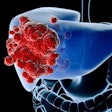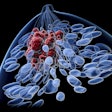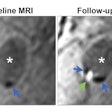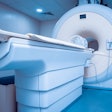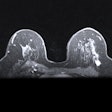WASHINGTON, DC - A new report from the University of California, Los Angeles (UCLA), is calling into question recently proposed risk factors for developing nephrogenic systemic fibrosis (NSF).
NSF is a rare but debilitating disease that affects patients with renal impairment who have been exposed to gadolinium-based contrast agents. Patients at risk include those who have undergone organ transplantation, had recent vascular surgery or immunosuppression, or have abnormal serum electrolytes, including ionized calcium and phosphates.
The study, presented Monday at the annual meeting of the American Roentgen Ray Society (ARRS), sought to analyze and compare potential associations between various clinical and laboratory factors and NSF among a controlled case study of patients.
The researchers of the retrospective study found 13 patients diagnosed with NSF over a 10-year period. Two of the patients had no record of gadolinium exposure, while one patient who was exposed to gadolinium exposure did not have the contrast dose recorded. Those patients were excluded from the study.
The researchers analyzed the complete records for the 10 remaining patients for clinical variables, including gadolinium dose, serum electrolytes, and medication history. All patients were dialysis-dependent.
Control parameters
To create the control group, the researchers selected a 13-month period, which included 13,914 gadolinium studies performed on 1,731 patients. They reviewed the medical histories and matched patients for age and gender for the control group. The mean age at gadolinium exposure of the 10 NSF patients (seven women, three men) and 10 control patients was 39 years.
In reviewing the histories, the researchers considered variables such as patient age at gadolinium exposure; gadolinium dose; duration and type of dialysis; cause of renal failure; medical conditions, including thrombotic events and proinflammatory states; medications at the time of gadolinium exposure; and history of organ transplantation.
In comparing the two groups, the researchers found that the mean duration of dialysis before first gadolinium exposure was not statistically different, ranging from 1,600 days to 1,800 days. The type of dialysis and the cause of renal failure also were not significant between the patient samples.
As for gadolinium exposure, the team "found that the volume of gadolinium, a single dose of gadolinium, and the cumulative dose while dialysis-dependent for NSF cases and the controls were not statistically significantly," said Steven Sauk, a UCLA medical student who presented the study results. "At our institution at the time, all patients were given gadodiamide."
Statistical insignificance
The researchers also found no significant difference between NSF patients and controls with respect to mean gadodiamide dose (0.16 for NSF patients, compared with 0.21 mmol/kg for the control group), cumulative dose (both groups had 0.39 mmol/kg), cause of renal failure, or type or duration of dialysis before gadolinium exposure.
Significant difference also was lacking in serum-ionized calcium or phosphate levels between NSF cases and the control group. Seven of the 10 NSF patients and three of the 10 control cases received erythropoietin at the time of gadolinium exposure.
Seven of the 10 NSF patients were on immunosuppressive therapy at the time of NSF diagnosis; five NSF patients also were on immunosuppressive therapy at the time of gadolinium exposure. In two of the 10 NSF patients not on immunosuppressive therapy at the time of gadolinium exposure, NSF symptoms developed only after the patients underwent organ transplantation and immunosuppressive therapy was initiated. Two of the 10 control patients were on immunosuppressive therapy at the time of gadolinium exposure.
"All NSF patients with adequate medical records and follow-up had gadolinium exposure and were in dialysis-dependent renal failure," Sauk said. "The factors possibly associated with NSF in this study include immunosuppressant use that was more frequent among cases than among controls, but it did not achieve statistical significance."
NSF nonfactors
Erythropoietin use also was not statistically significant or found to be a prerequisite for developing NSF, even though erythropoietin was more prevalent among NSF cases than the control group.
"In our study, the factors that were not associated with NSF include higher cumulative dose of gadolinium -- or even low doses of gadolinium, which may be associated with NSF," Sauk said. "The etiology of renal failure and type of dialysis, elevated serum electrolytes, and organ transplantation also were not found to be associated with NSF."
Limitations of the retrospective study included the small number of NSF cases analyzed. In addition, there were incomplete medical records and follow-up, and gadolinium-exposed patients who were lost in follow-up may have been diagnosed with NSF elsewhere. Also, because UCLA used gadodiamide as its primary contrast agent, the study could not compare different agents and their association with NSF.
"This study does not support many of the recently proposed risk factors for developing NSF," Sauk concluded. "Until the pathogenesis of NSF is elucidated, clinical benefits of gadolinium-enhanced MR imaging and the risk of NSF must be weighed on a case-by-case basis."
By Wayne Forrest
AuntMinnie.com staff writer
April 15, 2008
Related Reading
Gadolinium/NSF lawsuits centralized in Ohio federal court, March 21, 2008
Contrast firms hit with another NSF lawsuit, March 18, 2008
ECR NSF studies raise as many questions as answers, March 7, 2008
Study offers more evidence that multiple factors up NSF risk, January 24, 2008
'Uniquely higher' relaxivity rates give gadobenate an edge, January 23, 2008
Copyright © 2008 AuntMinnie.com


.fFmgij6Hin.png?auto=compress%2Cformat&fit=crop&h=100&q=70&w=100)




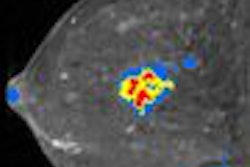
.fFmgij6Hin.png?auto=compress%2Cformat&fit=crop&h=167&q=70&w=250)

